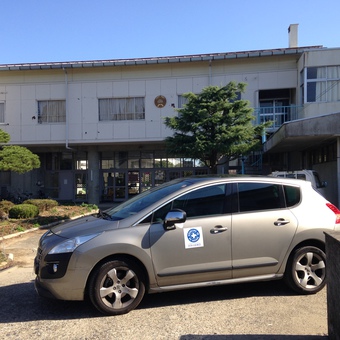East Great Earthquake Fukushima Sou-Sou project report 10.

The collaborative NPO, Soma Follower Team, has been providing school counseling in the elementary and junior high schools that suffered damages in the city of Soma. MDM has also been participating in these activities as part of providing the care of mental health. This time, I am presenting the report of Konomi Asai who has been active in an elementary school in the City of Soma.
_____
I have been engaged in this work for a single school grade level, each of whose classes consists of a little less than 20 pupils. It is a school where the pupils felt at home as they have been friends living in the same area since their preschool days and even if they may not be in the same school year, they are acquainted with each other. After class, they went home traveling in the same direction. I was impressed by how well they came together naturally as groups as they left school to go home.
As it has been three years since the earthquake, things look settled down at first glance and no influence of the earthquake is apparent in the behavior of the children. I believe that the fact the teachers had been seeing to the care of those in their charge within a small scale, constituted a factor for the prevention of large problems. On the other hand, some of them are wearing “Glass Badges radiation dosimetry (personal dosimeters)” and have been living from day to day, burdened with the anxiety over radiation, something which they do not and cannot talk about. In this area, the damages inflicted by the Tsunami have, to a certain extent, become a thing of the past, but the damages from the nuclear power plant accident have continued to be felt as ongoing problems.
Given this situation, the children, in the same way as the children of their age in other areas, have been living with all kinds of anxieties and problems, such as personal relationships, bullying, truancy, developmental disorder and family problems, etc. Seeing that, I felt that it would be important to continue to provide the care of mental health, treating their earthquake experience as an “opening”. However, I felt that it would be important not to force the children to remember their trying experiences or to force them to talk about them, but rather to provide opportunities for them to talk about them if and when they want to do so, or to recall about them if and when they want to do so.
In a small school where human relationships are intimate, making it difficult to communicate at will, I felt that sustained support provided by outsiders was meaningful. Moreover, the experience with the school counselors in the elementary school is the very first experience for many children to receive the “support for their hearts and minds.” I hope that this experience will enable them to learn the importance of mental health and how to go about sharing their problems with their counselors.
The more time passes after the earthquake, the more children there are who move to this area. I think that these transfer pupils experience all kinds of stress that accompany their move, the difference in the climate, culture and school environment. I expect that the children who move to Fukushima from other prefectures live, in one form or another, with the reality that they have come to the earthquake disaster area. They must also feel that they were different from the majority of their school mates who have had shared experiences with each other since their early childhood. For elementary pupils who tend to pursue “the same things as friends”, unless they were given the opportunities that make it easy for them to express their personal thoughts and anxieties, they would end up suffering with them on their own.
It is vital to provide them with long-term support that includes both directly and indirectly the influence of the earthquake, as well as other aspects of their experience.
Konomi Asai
Clinical Psychologist
